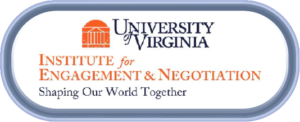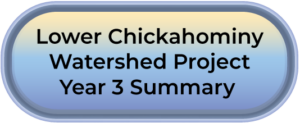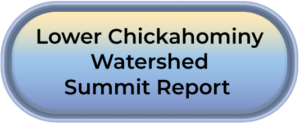Lower Chickahominy
Outreach
The Lower Chickahominy Watershed Project (LWCP) is a collaborative study that supports improved coordination between natural resource agencies, local governments, tribal governments, regional organizations and businesses, and other stakeholders. Year three of the study included a stakeholder engagement process, which consisted of thought leader interviews, focus groups, and a public survey. The Institute for Engagement and Negotiation (IEN) at the University of Virginia led the outreach effort. The process aimed to define stakeholder interests, identify issues, and develop and refine potential coordinated watershed policies and strategies for maximizing both socio-economic and ecological benefits.
Thought Leader Interviews
The first step of the engagement process was the thought leader interviews conducted by IEN. Of the 16 total interviews, 12 were face to face, and four were by phone. Five specific ideas were consistent throughout the interview process:
- Increase public access to the river
- Develop a river corridor plan
- Enhance ecotourism, local history, and venue availability (i.e., restaurants)
- Conserve existing habitat and forest cover
- Develop a Memorandum of Understanding (MOU) between stakeholders
Focus Groups and Survey
The five priorities above laid the groundwork for the three focus group meetings. The three focus groups were designated according to interest: Natural and Historic Resources, Government, and Business Communities.
The focus groups tested four main ideas, which included: Increasing public access to the river, Enhancing ecotourism, Conserving forest land and existing habitat, and Development of a river corridor plan. Following the focus group sessions was the stakeholder survey to further validate the emerging themes. After completing all three steps of the engagement process recommendations were made for years four and five of the Lower Chickahominy Watershed Project. You can read the full report on the engagement process here.
Workshop and Summit
Two workshops took place over the summer of 2020: the Tribal and Local Government Workshop and the Lower Chickahominy Watershed Summit.
The Tribal and Local Government Workshop aimed to bring together both Tribal leaders from the Chickahominy Indian Tribe, Chickahominy Indians Eastern Division, and the Pamunkey Indian Tribe, as well as local government officials from the three counties in the watershed (Charles City, James City, and New Kent). This workshop provided a space for open dialogue about tribal history and culture, as well as any questions, comments, or concerns about development and its potential impact. The overall aim was to strengthen the relationship between the two entities.
The Watershed Summit (full report here) included participants from all aspects of the outreach process to work together to determine action steps, deliverables, and potential partners for the following strategies:
- Create an Ongoing Lower Chickahominy Watershed Partnership
- Physical Recreational Infrastructure
- Sustainable Economic Development
- River Advocacy, Education, and Marketing
- Land Conservation and Landowner Education
- Protection of Tribal, Sacred, Cultural, Historic Sites and Traditions
- Ecological Restoration and Stewardship
Recommendations included the development of watershed-wide policies:
- To expand on the Capital Trail by creating spur trails heading north from the existing trail
- To support using the river as a "soft" economic driver for activities such as ecotourism, ecological tours, fishing, and fish farming
- To improve data on contiguous forest blocks. Increase geospatial mapping and access to data
- To systematically integrate tribal and other histories into public access points including family-owned fishing industries
- To better support “living shorelines” for river restoration projects
- To allow for seasonal access where appropriate, including policies that promote low-impact activities
The Institute of Engagement and Negotiation at the University of Virginia led the outreach effort for this project.
Year 3 Summary Report
Read more about the thought leader interviews, focus groups, and public survey of the Lower Chickahominy Project.
Watershed Summit Report
Read about the regional watershed policy summit held virtually in August 2020.





